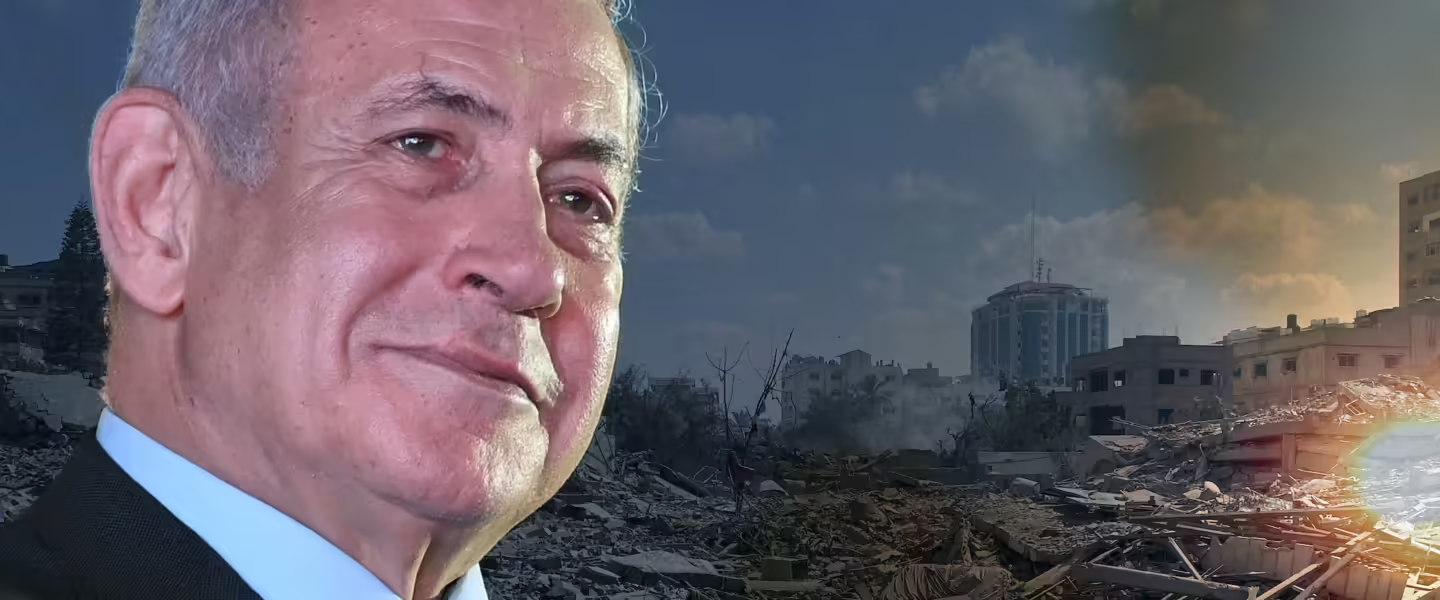With Hamas reappearing at locations that had already been cleared, Gaza is beginning to resemble a militarized version of whack-a-mole.
|
Listen To This Story
|
Not surprisingly, the Israeli campaign in Gaza is fast turning into a political hot potato, both for Israel’s supporters and for Prime Minister Benjamin Netanyahu.
Last weekend, highly-placed sources in the Israel Defense Force (IDF) arranged a series of apparently coordinated news briefings charging that the Netanyahu administration has been squandering its recent gains in Gaza. Netanyahu also has been getting increasing criticism for launching the Gaza campaign without first developing an exit strategy and a coherent plan to fill the political vacuum that is sure to follow once the fighting stops. The IDF is no friend of Hamas, but senior Israeli generals want to be certain that they don’t become scapegoats when the Gaza campaign inevitably ends in disaster.
For his part, Netanyahu continues to insist that as long as Hamas’s command structure is intact, it is impossible to plan for the future. But the fact is, it’s hard to say who is really in command in Gaza these days, although if anyone is calling the shots, it is Israel, not Hamas.
The essential question for the moment is whether carpet-bombing Gaza can really eliminate Hamas, which appears to be operating safely underground in a labyrinth of tunnels that seem immune to what is going on above ground. And Hamas fighting units have started moving back into parts of northern Gaza that the Israelis thought they had already cleared. The campaign, in short, is beginning to resemble a militarized version of whack-a-mole.
If Hamas has been able to elude the IDF, ordinary Palestinians have not been that lucky. There was some confusion when the United Nations Office for Humanitarian Affairs (OCHA) appeared to reduce its estimate of Palestinian casualties, reporting that the Israeli campaign had so far only resulted in the deaths of at least 7,797 Palestinian children and nearly 5,000 women. The Gaza Health Authority had earlier reported a higher toll of 15,000 children and nearly 10,000 women killed as a result of Israeli military action.
According to NBC News, OCHA later explained that its figures referred only to those dead whose names could be definitely identified. Another 10,000 Palestinians have been listed as missing and are believed dead, buried in the rubble created by Israeli bombing.
Both OCHA and the Gaza Health Authority still estimate the overall Palestinian death toll at around 35,000. OCHA estimates that another 1.1 million Palestinians face starvation as a result of the Israeli campaign, which has also destroyed at least 370,000 Palestinian homes.
However one looks at it, in human terms the toll is horrendous — especially since the casualties are unlikely to have had any direct connection to Hamas.
Hardly anyone questions the fact that Hamas’s October 7 attack against Israel was unspeakable, an atrocity. But it’s hard not to ask oneself whether Netanyahu also saw it as an opportunity to obliterate Gaza once and for all — his version of the final solution. If this seems too far-fetched or hard to stomach, there is no getting around the reality that Gaza has been rendered unlivable indefinitely by Netanyahu’s bombing campaign.
Netanyahu — propelled by his own legal and political predicaments, and apparently unfazed by any of this — insists that Israel will fight on even if all it has left is its fingernails.
But to what end? What is the real objective? Hardly anyone questions the fact that Hamas’s October 7 attack against Israel was unspeakable, an atrocity. But it’s hard not to ask oneself whether Netanyahu also saw it as an opportunity to obliterate Gaza once and for all — his version of the final solution. If this seems too far-fetched or hard to stomach, there is no getting around the reality that Gaza has been rendered unlivable indefinitely by Netanyahu’s bombing campaign.
In all fairness, it is impossible to know what was really going on inside Netanyahu’s mind, and it probably no longer matters. The all-out assault on Gaza is Netanyahu’s version of alea iacta est (the die is cast) — a phrase attributed to Julius Caesar on his decision to cross the Rubicon and lay low the Roman Senate.
It’s possible that Netanyahu did not feel that he needed to think too deeply about Hamas’s original game plan because, for Netanyahu, Gaza’s destruction may count for more than the destruction of Hamas.
In contrast, Hamas’s October 7 attack appears to have been carefully calculated. According to The New York Times, US and Israeli intelligence agencies have spent the last few months developing a detailed psychological profile of Yahya Sinwar, Hamas’s political commander and its key strategist concerning Gaza. Sinwar, who is believed to be hiding underground in Gaza’s labyrinthian maze of tunnels, taught himself Hebrew while spending two decades in Israeli prisons.
While in detention, he also had more than enough time to perfect his own psychological profile of how Israelis think. He not only knew exactly what to expect following the October 7 attack, he effectively engineered Israel’s response. The Hamas thugs who initiated the attack were told to be as brutal and outrageous as possible. That brutality required nearly a year to organize. The orders were to rape women, behead babies, kill the elderly, and basically wreak mayhem, violating any notion of human decency. The question is: Why?
After Hamas’s attack, some members of the group explained that Palestinians in Gaza had had the feeling that they were being squeezed to death and that if Palestine was going to die, it might as well take Israel along with it. That argument may be emotionally convincing, but it’s also possible that Hamas’s true intentions were more concrete and strategic.
Chuck Freilich, writing in the Israeli newspaper Haaretz, points out that, despite the horror associated with October 7, Hamas never represented a genuinely serious security threat to Israel. Even Hezbollah, which is far more effective than Hamas, cannot seriously threaten Israel’s existence. Iran, on the other hand, is a potentially serious threat. Defense experts rank Israel’s IDF in 17th place among the world’s armies. Iran, with a population of nearly 90 million people compared to Israel’s 7 million Jewish citizens, ranks in 14th place, and Iran is close to becoming a nuclear power.

Iran’s visceral hatred for Israel dates back to the last days of the Shah Mohammad Reza Pahlavi. The late shah’s father, Reza Khan, was a commoner from a respected tribe. Trained as a Russian Cossack, he had served in the Russo-Persian Wars, and declared himself to be shah after the collapse of Iran’s hereditary Qajar dynasty in 1925. Reza Khan hoped to create his own dynasty, but its origins were totally artificial.
Britain, obviously interested in Iranian oil, supported Reza Khan until the latter, who claimed Aryan and Persian roots, began to identify himself with Hitler during World War II. After the war, Iran briefly experimented with democracy, but when its popularly elected prime minister, Mohammad Mosaddegh, nationalized the Anglo-Persian oil company and flirted with the Soviet Union, the British convinced America’s CIA to organize a coup that overthrew Mosaddegh and placed Reza Khan’s son, Mohammad Reza, on the throne as Iran’s new shah.
Not surprisingly, many Iranians considered the new shah to be complicit with Western imperialism. Everything might have passed off as business as usual, but, fueled by Iran’s enormous oil wealth, the new shah turned out to be extraordinarily adept at manipulating his manipulators. As the regime progressed, it became increasingly brutal, turning to repression and torture to hold onto power. The US and the CIA suffered guilt by association.
Israel’s real security depends not just on the IDF, but on a complex alliance that includes the United States and potentially friendly Arab countries.
Israel’s Mossad had been even more active than the CIA in trying to prolong the shah’s doomed efforts to hold onto power. Iran, which saw Israel as a surrogate for the US and an enemy of Iranian independence, has not forgotten. Iran continues to see Israel and America’s allies in the Middle East as promoters of a colonial system that is motivated primarily by the need to access the region’s oil.
Iran, which has ambitions to become the region’s superpower, might want to eliminate Israel, but it knows that it cannot do that as long as the United States continues to guarantee Israel’s security. That point was emphasized when President Joe Biden deployed two aircraft carriers, along with an assortment of guided-missile cruisers and destroyers, before Israel’s move into Gaza.
The bottom line is that Israel’s real security depends not just on the IDF, but on a complex alliance that includes the United States and potentially friendly Arab countries, notably Jordan, Egypt, Saudi Arabia, and the United Arab Emirates.
The real objective of Hamas’s October 7 attack may have been the destruction of the regional alliance that Israel needs if it wants to survive into the future. The initiatives launched by Donald Trump and Jared Kushner to encourage business arrangements between Israel and Saudi Arabia, a traditional competitor with Iran for influence in the region, may have accelerated the efforts to upset what had to look to Iran like a disturbing new arrangement in the region’s geopolitics.
Regardless of whether that analysis is correct or not, the current carnage in Gaza is putting Israel at far greater risk than any threat that Hamas can manage on its own. If Biden’s support for Israel can lead to Trump’s winning the upcoming US elections, both Iran and Hamas will profit. The US will effectively be neutralized as an international power, and future support to Israel will be called into question. Netanyahu will not only have undermined Israel’s future, he may also be responsible for the unraveling of Western influence in the Middle East and beyond.
In any event, those Arab countries that might want better relations with Israel will find it impossible to associate with a regional pariah accused of murdering thousands of women and children. Netanyahu’s policies may be dangerously isolating Israel in an extremely volatile and dangerous neighborhood.
In the meantime, Sinwar is enjoying the deadly game of whack-a-mole he precipitated. The Israelis may eventually kill him, but it’s not hard to imagine that plenty of volunteers are already lining up to take his place. Sinwar may have sold his soul to the devil, but from his point of view, Gaza was already stuck in hell before he launched his attack.




